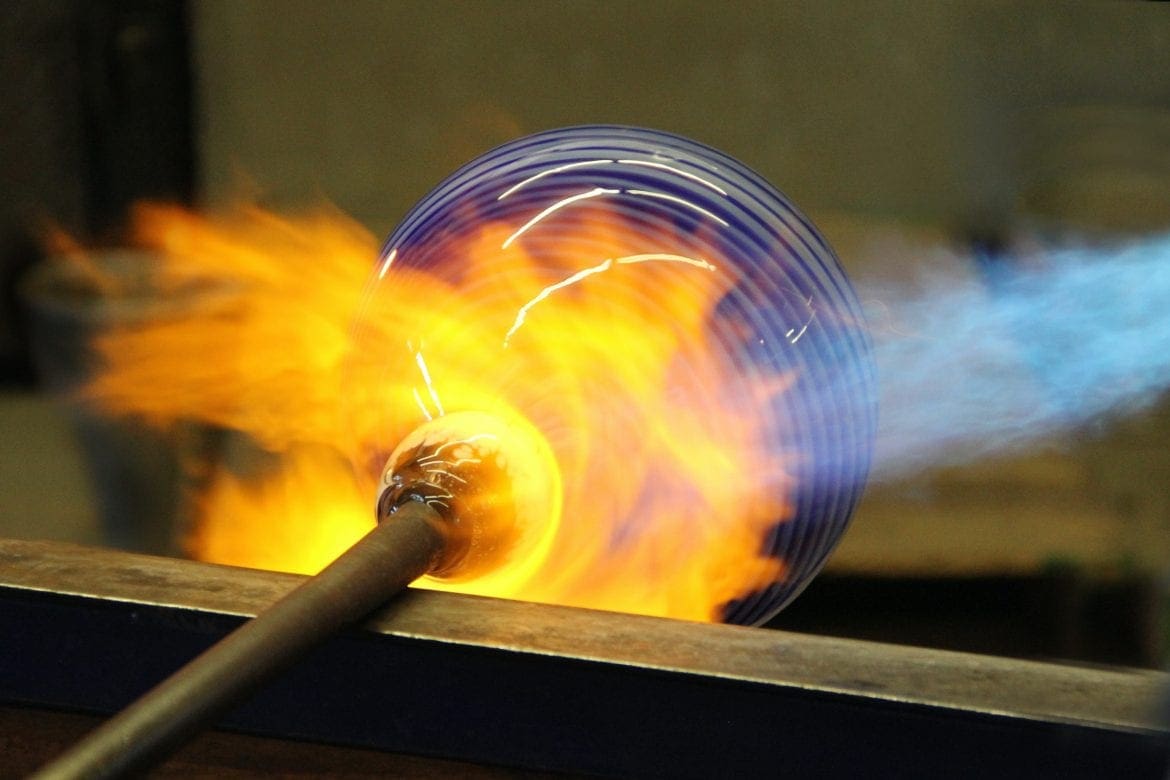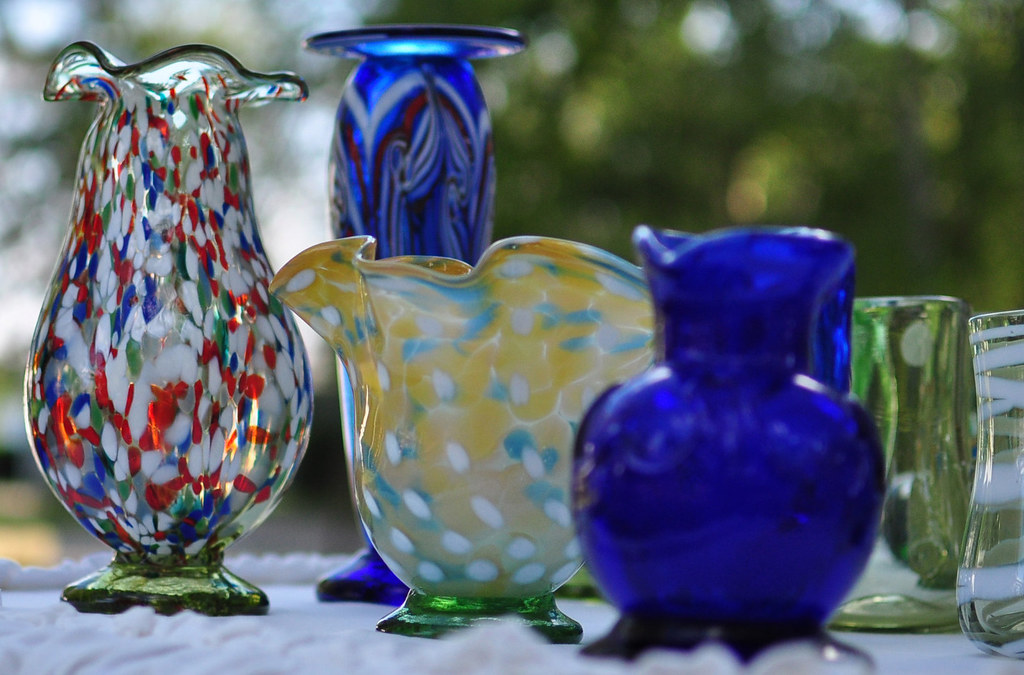The art of glassblowing is a delicate craft that has been passed down through the centuries to artisans all over the world. Blowing fiery, red-hot glass and molding it into a detailed design is a tedious task. In America, it took many years for the industry to perfect and grow this fine art. However, many people don’t know that South Jersey is the birthplace of the glassblowing industry in America.
What is Glassblowing
Glassblowing is the practice of blowing air into a tube to shape semi-molten glass that has been softened by heat. Artisans that blow and mold glass are known as gaffers.
The art of glassblowing was first invented in the 1st century B.C. by a Syrian craftsman. The Syrian glassblowing industry produced both glassware for everyday use and intricate sculptures that were exported to the Roman Empire and other world powers at the time. In the beginning, gaffers would blow glass into decorative molds like human heads, food, or other cultural symbols. Eventually, the Syrian glassblowers made spherical glasswork without molds through a process that is still used today.
The Birthplace of Glassblowing in America
Upon arriving in the New World, most settlers from Europe did not bring along the skill of glassblowing. Throughout the early 1600s, artisans attempted glassmaking throughout the 13 colonies and failed a number of times. This forced Americans to continue to ship glass in from England and depend on imports.
However, a young German immigrant would eventually become the unlikely Father of the American glassblowing industry. Caspar Wistar came to the colonies in 1717 at the age of 22. He had experience working in soap and button-making, but never in glassblowing. Wistar originally settled in Philadelphia, PA where he became a successful businessman surrounded by the upper class of society. In 1739, Wistar invested in opening the first glass factory in the colonies in Millville, New Jersey. He called it the United Glass Company. This officially made New Jersey the birthplace of glassblowing in America.
In the years before the American Revolutionary War, Wistar recruited four German graffers to work for his glass company in Salem County. To persuade the artisans, he covered travel expenses, provided land, homes, servants, and one-third of the company’s profits. The graffers came equipped with their skill and glass recipes, ready to catalyze the glassblowing trade in America.
Upon the graffers arrival, Wistar’s factory produced thousands of glass bottles each year. The factory also created window glass and other glassware. Wistar even designed glass globes for his friend from Philadelphia’s scientific studies, Benjamin Franklin.
NJ is Naturally Perfect for Glassblowing
New Jersey’s Salem County became the prime destination for glassmaking in the colonies. The natural resources available in the area made South Jersey perfect for the birthplace of glassblowing. Wood, sand, soda ash, and silica are all required to make glass. Graffers could easily find all of these ingredients in NJ’s Pine Barrens and the many waterways to the south of the colony.
The Process of Glassblowing
The process of glassblowing begins with the manufacturing of glass by mixing together raw materials such as sand, wood, soda ash, silica, and other chemicals for coloring. Then, graffers place glass in a furnace—the glory hole—at 2,000 degrees where the glass fuses together and becomes malleable. Next, molten glass gathers at the end of a blowpipe until it ‘gobs’ together at the base of the stick.
Graffers roll out the glass on a flat metal slab known as a marver. The slab works to control the shape and temperature of the glass. To keep the it hot and malleable, gaffers transfer the glass between the marver and the hot furnace.
Graffers dip the molten glass into crushed, colored glass to add color while blowing. The colors fuse to the glass quickly due to the heat. Gaffers blow into the blowpipe and rotate it to give the glass its final shape. This generates a bubble of glass at the end of the stick. To add more details, glassblowers will use metal clips to bend the hot glass.
Finally, to remove the hot glass, graffers cut the glass off with steel tweezers called jacks. This last step removes the glass from the blowers which allows it to rest and cool.
Glassblowing After Wistar
Eventually, Wistar died in 1752 and the United Glass Company went into the hands of his son. The company inevitably failed due to mismanagement. But that wasn’t the end of glassblowing in South Jersey. Many of the graffers left to continue their work at their own glass factory in Glassboro, New Jersey, maintaining the art throughout the state.
Today, the history regarding the American glassblowing industry is preserved at WheatonArts in South Jersey. At the exhibit, you can see a variety of glass pieces created in New Jersey hundreds of years ago. Visitors can even witness glassblowing workshops along with the finest collection of American glass in the country.
Main photo by Jan Canty
About the Author/s
Meg is studying magazine journalism and civic engagement at Syracuse University with a passion for writing and editing. She is a Jersey girl at heart and has a slight obsession with Chai Tea Lattes.





1 comment
Meg – nice article but you neglected to mention that Salem County College has the only scientific glassblowing degree program in the United States, along with an Art Glass program. World renowned artist Paul Stankerd is a graduate of the program, and frequent guest instructor.